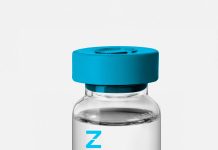
Opioid use disorder (OUD) is a chronic neurological disorder characterized by the compulsive, repeated use of opioid drugs, leading to prolonged self-administration. AstraZeneca recently terminated the development of an OUD drug, AZD4041, after the orexin 1 receptor antagonist demonstrated a drug-drug interaction with an antifungal during a Phase II trial.
The failure of the trial highlights the challenges in developing non-opioid medications that treat addiction and withdrawal, says GlobalData, a leading data and analytics company.
According to GlobalData’s Drug Database, six out of the seven agents currently in late-stage development (Phases IIb–III) are non-opioids. Aside from Jazz Pharmaceuticals’ Epidyolex, which has published Phase II outcomes in a study evaluating its efficacy as an adjunct treatment to patients on opioid agonist therapy (), there is a distinct lack of efficacy data for the other pipeline agents.
Furthermore, the non-opioid pipeline treatments are expected to enter the market as adjunctive treatments to the existing first-line therapies, so they would not likely displace standard or care opioid treatments, methadone or buprenorphine, as first-line treatments for OUD.
Jos Opdenakker, pharma analyst at GlobalData, comments, “Opioid agonists dominate the treatment landscape for OUD, but their use is marked by a risk of “diversion”—the illicit use of opioid medications—meaning that their dispensing is often restricted to specialized treatment programs. The issues surrounding opioid medications have led to a significant push in developing non-opioid medications that treat addiction and withdrawal, but the competition from existing opioid medications is strong, and finding a non-opioid to match their efficacy is proving to be challenging.”
Key opinion leaders (KOLs) previously interviewed by GlobalData have spoken at length about the autonomy patients living with OUD have over their treatment. KOLs stated that methadone and buprenorphine are well-recognized by OUD sufferers, they are effective, and that it would be difficult to develop a therapy that would be able to challenge these two.
GlobalData forecasts that opioid agonist therapies could drive combined sales of approximately $1.75 billion by 2033 in eight major markets (8MM*) and make up 83.8% of the OUD market. Such market dominance is emblematic of the lack of an effective alternative to opioid agonist therapies, but also of patient preference, which plays a key role in OUD treatment.
Opdenakker says, “OUD is often described as a relapsing-remitting disorder by KOLs, in that the natural tendency of an OUD patient is to use opioid drugs. By framing OUD through that lens, it is no surprise that non-opioid medications are only being investigated as adjunctive therapies to existing opioid treatments. There is an underlying acceptance that the opioid pathway is the only viable pathway in the treatment of OUD.”
“The OUD treatment landscape is bereft of an effective non-opioid therapy to challenge the existing opioid agonists. Although opioid agonists are the gold standard for the treatment of OUD, they have not been able to solve the opioid crisis. Any non-opioid product that is able to reach the market with a strong efficacy and safety profile for the treatment of OUD would likely see strong uptake and will likely disrupt the OUD market,” Opdenakker says.








